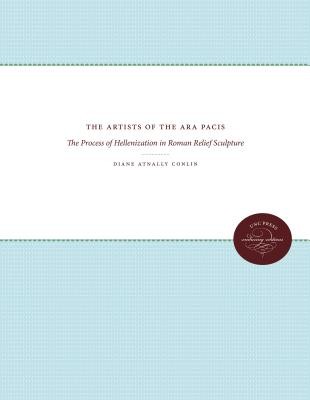
- We will send in 10–14 business days.
- Author: Diane Atnally Conlin
- Publisher: University of North Carolina Press
- ISBN-10: 080786899X
- ISBN-13: 9780807868997
- Format: 21.1 x 27.7 x 2.3 cm, softcover
- Language: English
- SAVE -10% with code: EXTRA
Reviews
Description
The Ara Pacis Augustae, or Altar of Augustan Peace, was built to commemorate the return to Rome of the emperor Augustus and his general Agrippa, who had been away for many years on military campaigns. Dedicated in 9 B.C., the monument consists of an altar and surrounding wall, both decorated with a series of processional friezes. Art historians and archaeologists have made the Ara Pacis one of the best-known, most-studied monuments of Augustan Rome, but Diane Conlin's reassessment of the artistic traditions in which its sculptors worked makes a groundbreaking contribution to this scholarship. Illustrated with over 250 photographs, Conlin's innovative analysis demonstrates that the carvers of the monument's large processional friezes were not Greek masters, as previously assumed, but Italian-trained sculptors influenced by both native and Hellenic stonecarving practices. Her systematic examination of the physical evidence left by the sculptors themselves--the traces of tool marks, the carving of specific details, the compositional formulas of the friezes--also incorporates an informed understanding of the historical context in which these artists worked.
Originally published in 1997.
A UNC Press Enduring Edition -- UNC Press Enduring Editions use the latest in digital technology to make available again books from our distinguished backlist that were previously out of print. These editions are published unaltered from the original, and are presented in affordable paperback formats, bringing readers both historical and cultural value.
EXTRA 10 % discount with code: EXTRA
The promotion ends in 7d.16:23:41
The discount code is valid when purchasing from 10 €. Discounts do not stack.
- Author: Diane Atnally Conlin
- Publisher: University of North Carolina Press
- ISBN-10: 080786899X
- ISBN-13: 9780807868997
- Format: 21.1 x 27.7 x 2.3 cm, softcover
- Language: English English
The Ara Pacis Augustae, or Altar of Augustan Peace, was built to commemorate the return to Rome of the emperor Augustus and his general Agrippa, who had been away for many years on military campaigns. Dedicated in 9 B.C., the monument consists of an altar and surrounding wall, both decorated with a series of processional friezes. Art historians and archaeologists have made the Ara Pacis one of the best-known, most-studied monuments of Augustan Rome, but Diane Conlin's reassessment of the artistic traditions in which its sculptors worked makes a groundbreaking contribution to this scholarship. Illustrated with over 250 photographs, Conlin's innovative analysis demonstrates that the carvers of the monument's large processional friezes were not Greek masters, as previously assumed, but Italian-trained sculptors influenced by both native and Hellenic stonecarving practices. Her systematic examination of the physical evidence left by the sculptors themselves--the traces of tool marks, the carving of specific details, the compositional formulas of the friezes--also incorporates an informed understanding of the historical context in which these artists worked.
Originally published in 1997.
A UNC Press Enduring Edition -- UNC Press Enduring Editions use the latest in digital technology to make available again books from our distinguished backlist that were previously out of print. These editions are published unaltered from the original, and are presented in affordable paperback formats, bringing readers both historical and cultural value.


Reviews